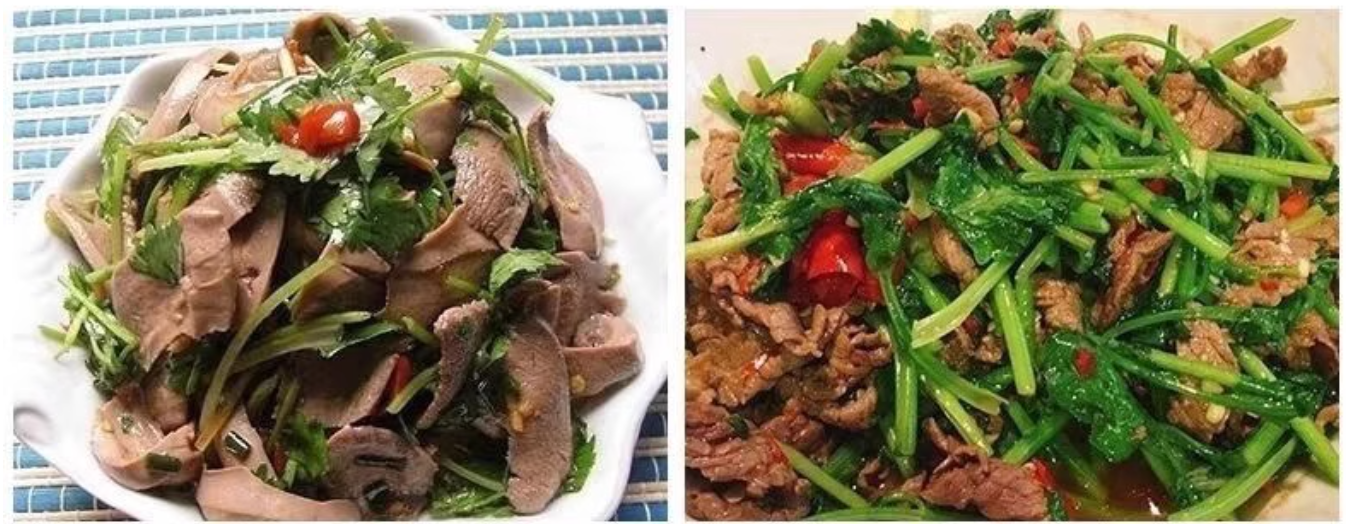Cilantro, a member of the Apiaceae family and a staple herb in many culinary traditions, renowned for its distinctive flavor, can be a source of delight for the senses. However, for some individuals, cilantro consumption may lead to allergic reactions, raising questions about the causes, symptoms, and effective management of cilantro allergy. This article aims to provide a comprehensive overview of cilantro allergy, incorporating insights from recent scientific research.
While cilantro’s aroma is often described as pleasantly citrusy or lemony, a significant portion of the population experiences a unique perception, perceiving cilantro as soapy, metallic, or even pungent.
This phenomenon, termed “cilantro soap syndrome,” is attributed to the presence of a group of compounds called aldehydes, primarily 2-decenal and 2-hexenal, which play a crucial role in cilantro’s flavor profile. These aldehydes are also found in some plants related to cilantro, such as parsley, dill, and fennel, and they are responsible for the soapy scent of some insect repellents and cleaning products.
Prevalence and Underlying Mechanisms
The actual prevalence of cilantro allergy is still being debated, with estimates ranging from 0.2% to 4% of the population.
Genetic predisposition also plays a crucial role in cilantro allergy development. Individuals with a family history of allergies or specific genetic markers may be more prone to developing allergic reactions to cilantro[^3^]. Research suggests that specific genes related to immune regulation and the Human Leukocyte Antigen (HLA) system may contribute to increased susceptibility[^4^][^5^].
Studies suggest that the allergy is more prevalent among Caucasians and individuals of Asian descent. The exact mechanism underlying cilantro allergy is not fully understood, but it is believed to involve a genetic predisposition to perceive cilantro’s aldehydes as irritants or allergens.
Other studies show that cilantro allergy is primarily driven by the body’s immune system reacting to specific proteins within the herb. Notably, Cor a 1 and Cor i 1 proteins have been identified as major allergens in cilantro, triggering immune responses in susceptible individuals.
Sensitization, the process by which the immune system becomes hypersensitive to specific substances, plays a crucial role in cilantro allergy. Frequent exposure to cilantro or related allergens may lead to the development of an allergic response over time.

Symptoms and Their Impact
The primary symptom of cilantro allergy is a soapy or metallic taste in the mouth shortly after consuming cilantro or foods containing the herb. This unpleasant taste can significantly impact an individual’s culinary experiences and even lead to avoidance of dishes that commonly incorporate cilantro. In addition to the taste, cilantro allergy can trigger various other symptoms, including:
- Oral allergy syndrome (OAS): Also known as pollen-food allergy syndrome, OAS is characterized by localized allergic reactions in the mouth and throat, such as itching, swelling, and redness of the lips, tongue, and palate.
- Stomach upset: Cilantro allergy can also manifest as digestive issues, including nausea, vomiting, or diarrhea.
- Respiratory Symptoms: Sneezing, Runny or stuffy nose, Coughing, and Shortness of breath
Rarer and More Severe Reactions
In rare cases, cilantro allergy can trigger more severe reactions, including:
- Anaphylaxis: This life-threatening allergic reaction involves a rapid drop in blood pressure, difficulty breathing, swelling of the face and throat, and a sense of impending doom.
- Skin reactions: These reactions may include hives, eczema, or swelling of the skin.
Diagnosis and Medical Management
If a cilantro allergy is suspected, consultation with an allergist is crucial for accurate diagnosis. A thorough medical history and physical examination can provide valuable clues about the possibility of an allergic reaction. Skin prick or blood tests can precisely detect the presence of antibodies to cilantro-specific allergens, confirming the diagnosis.
For mild symptoms, over-the-counter antihistamines can effectively relieve the soapy taste and reduce OAS symptoms. However, in cases of anaphylaxis or severe reactions, epinephrine auto-injectors are prescribed for emergency treatment.
Lifestyle Adaptations to Minimize Cilantro Exposure
Given cilantro’s widespread use in various cuisines, mainly Mexican, Indian, and Thai cuisine, effectively managing cilantro allergy requires careful attention to food choices and lifestyle modifications.

The most effective way to manage cilantro allergy is to avoid consuming foods containing cilantro. This includes carefully reading ingredient labels and informing restaurants about the allergy.
Here are some strategies to minimize cilantro exposure:
- Thorough Food Label Reading: Carefully scrutinize ingredient lists for any mention of cilantro, coriander powder, or extract.
- Open Communication at Restaurants: Inform servers about your cilantro allergy and inquire about dish ingredients.
- Home Cooking: Cooking at home provides greater control over ingredients, allowing you to avoid cilantro entirely.
- Mindful Consumption of Processed Foods: Many processed foods, such as seasonings, sauces, and dips, may contain hidden sources of cilantro. Carefully review ingredient labels and inquire about the ingredients used in prepared foods.
- Substitute Herbs: Replace cilantro with alternative herbs that do not trigger allergic reactions. Popular substitutes include parsley, basil, or chives.
- Allergy Medications: Antihistamines can help alleviate mild symptoms. Consultation with a healthcare professional is essential to determine the most suitable over-the-counter or prescription medications.
- Emergency Preparedness: Individuals with a history of severe allergic reactions should carry an epinephrine auto-injector. Immediate use is crucial in the event of anaphylaxis.
List of some canned foods that may contain cilantro:
- Canned salsa: Many canned salsas contain cilantro as a flavoring ingredient.
- Canned soups: Some canned soups, particularly Mexican and Thai soups, may contain cilantro as an ingredient.
- Canned beans: Canned beans are often seasoned with cilantro or coriander, which is a spice derived from cilantro seeds.
- Canned pasta sauces: Some canned pasta sauces, particularly those with a Mexican or Italian flavor profile, may contain cilantro as an ingredient.
- Canned dips: Some canned dips, such as guacamole and hummus, may contain cilantro as an ingredient.
- Canned vegetables: Some canned vegetables, particularly those in Asian or Mexican cuisine, may contain cilantro as an ingredient.
It is important to read the ingredient labels carefully on all canned foods to check for cilantro or coriander. If you have a cilantro allergy, it is best to avoid these products altogether.
Here are some additional tips for avoiding cilantro in canned foods:
- Choose plain, unflavored canned foods. These foods will not contain any herbs or spices, including cilantro.
- Cook your own beans and soups. This will give you more control over the ingredients and allow you to avoid adding cilantro.
- Make your own salsa and dips. This is a great way to control the flavor and ensure your food is cilantro-free.
Cross-Reactivity:
Cross-reactivity may occur between cilantro and other allergens, such as pollen or certain fruits. Individuals with known allergies should be vigilant and seek medical advice if they experience symptoms after consuming related substances.
Conclusion: Cilantro Allergy
Cilantro allergy, while relatively uncommon, can significantly impact the quality of life of affected individuals. Understanding the causes, recognizing symptoms, and implementing effective management strategies are vital in ensuring a safe and healthy lifestyle and enjoyable culinary journey. If you suspect cilantro allergy or experience adverse reactions, consult an allergist for proper diagnosis and guidance on personalized management approaches.
From all of us at Allergyfreelifestyle, we wish you a healthier and happier allergy-free lifestyle
References:
- “Perceived cilantro soapiness is associated with a genetic variant that influences the olfactory perception of aldehydes.” (Li et al., 2012)
- “A genetic variant in the olfactory receptor OR6A2 is associated with cilantro liking and perceived soapiness.” (Liu et al., 2013)
- “A genetic variant linked to cilantro sensitivity is associated with a specific olfactory receptor.” (Zhong et al., 2015)



